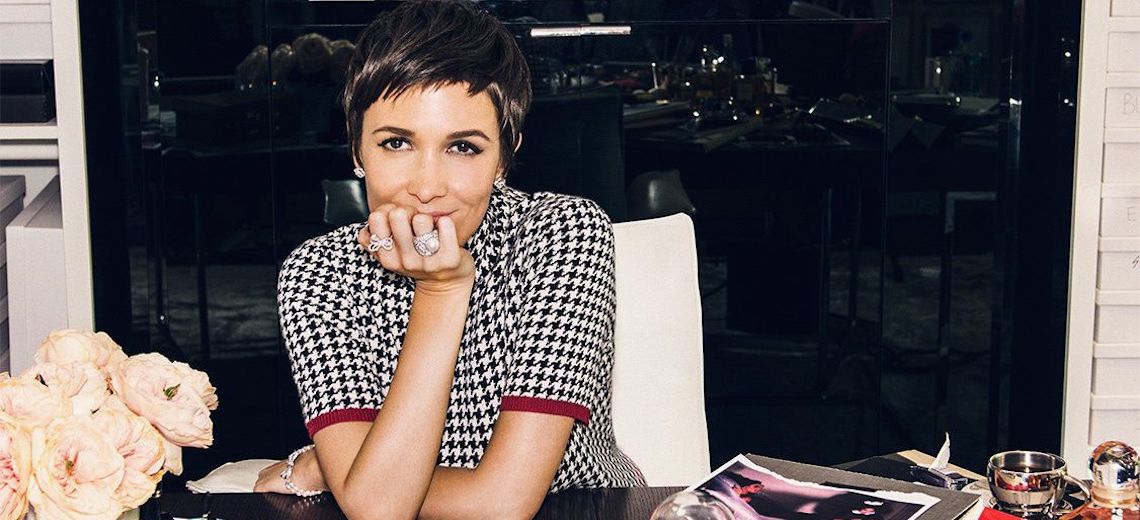After reports of talks between the two companies, luxury fashion e-tailer Farfetch announced on Friday that it will acquire luxury beauty retailer Violet Grey for an undisclosed amount.
As a part of the deal, Farfetch will be launching a beauty section on its site later this year and establishing NGG Beauty to incubate and accelerate new brands. A part of Off-White parent company New Guards Group, which was acquired by Farfetch in 2019, the new beauty category will be helmed by Violet Grey founder Cassandra Grey as its co-founder. Grey will also serve as the chair of Violet Grey and the global beauty advisor for Farfetch’s new beauty section.
Violet Grey’s “authoritative voice” and cultivation of a customer community in luxury beauty attracted Farfetch’s attention, said Stephanie Phair, chief customer officer at Farfetch.
“We experimented with beauty six years ago or so, and then realized that we needed to really adapt our model and think about the beauty-specific requirements,” said Phair.
“I think about Farfetch as the luxury internet, almost,” said Grey. “We’ve always imagined that we would partner at some point with a global technology platform, and it was just a matter of which one.”
NGG Beauty will function as a “startup” within the organization, said Grey.
“I’m a huge fan and longtime creative noodle collaborator with Virgil Abloh. That was how I was first introduced to New Guards Group and his partners there,” she said. She added that New Guards Group is “building the next generation of fashion brands” leveraging Farfetch’s technology. “So it’s kind of a no-brainer that we would do that in beauty.”
Ad position: web_incontent_pos1
Farfetch initially made a foray into beauty in 2015, but discontinued it due to the challenges with selling beauty under its marketplace model.
“One of the biggest learnings of that early foray into beauty was that we couldn’t take the exact same model that we took for fashion and apply it to beauty,” said Phair. Specifically, shipping internationally under Farfetch’s boutique-based marketplace model “wasn’t as easy to replicate in beauty.” The new beauty section will be an “e-concession model” created directly with brands, she said.
The beauty section will initially be available in America and Europe, with global expansion rolled out later. While Violet Grey will be mentioned, the section is “certainly a Farfetch beauty proposition,” said Phair. It will be geared toward Farfetch’s customer base that consists of 75% millennial and Gen-Z consumers. While brand names have been yet to be announced, Phair expressed that Farfetch is interested in Violet Grey’s curation of a mix of both established and startup luxury beauty brands.
“Violet Grey is always about a very tight edit, and we love discovery and launching new products. I’m sure there will be more of that,” said Grey.
Violet Grey, meanwhile, will continue to exist as a standalone business. As part of the acquisition, the beauty retailer will have access to Farfetch’s technology, logistics and operations for its standalone website and Los Angeles store. Niten Kapadia, previously the vp for operations at Farfetch, will become Violet Grey’s managing director.
Ad position: web_incontent_pos2
The acquisition marks Farfetch’s first for beauty. Other retailers acquired by Farfetch include Stadium Goods, in 2018, and fashion boutique Browns, in 2015.
Beauty is a key segment for Farfetch to join, with the global luxury beauty industry worth $68.9 billion, according to a 2021 report by Bain and Altagamma.
While beauty has seen more strength than fashion during the pandemic, Farfetch’s return to beauty “was always a matter of if, not when,” and the timing did not have to do with the pandemic, said Phair.
“Farfetch is a much bigger and more mature company than we were five years ago, so the conditions are better for us to do that now,” she said.




